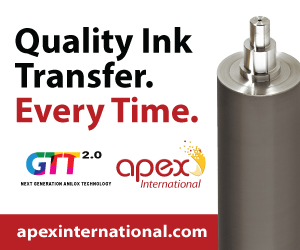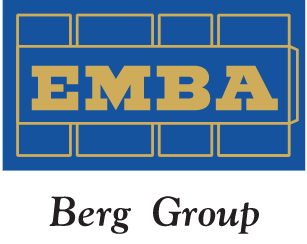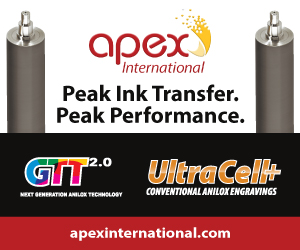The world is evolving at an unprecedented pace and several global mega-trends are reshaping consumer priorities and demands, compelling brands to adapt their packaging strategies.
This shift, according to a new report from Flexcon, is driven by a combination of environmental concerns, economic pressures, and a growing skepticism toward sustainability claims. As consumers become more distrusting and value-driven, their choices increasingly hinge on sustainability, convenience, aesthetics, and information transparency.
More than ever people are experiencing climate-related disasters first-hand, heightening awareness and concern about environmental issues, including plastic pollution. This reflects a widespread call for urgent action to address ecological impacts.
With high inflation rates and a heightened awareness of spending, consumers are becoming more cost-conscious. This sensitivity affects purchasing decisions, as buyers prioritize value and reprioritize where their money is spent.
According to MeaningfulBrands, consumer trust in brands is at an all-time low, with a 71 percent having little trust in brands delivering on their promise. With the sustainability topic getting increasingly more complex, and social media exposing bad practices, it’s difficult for consumers to distinguish between genuine sustainability efforts and greenwashing, emphasizing the need for transparency.
According to MeaningfulBrands, 72 percent of people are tired of brands pretending they want to help society. Driven by increased environmental concerns, economic pressures, and distrust in brand claims, consumers now want brands to not only say they adopt sustainable and ethical practice, but also drive sustainable and ethical change in the world. This demand spans across various sectors, urging companies to adopt more transparent and genuinely sustainable practices.
Despite heightened cost sensitivity, convenience remains a key purchasing driver that 70 percent of consumers are willing to pay more for. This paradox underscores a critical aspect of consumer behavior; even those with limited budgets are prepared to invest in products that offer greater ease of use and time savings, highlighting the need for brands to balance cost-effectiveness with convenience.
Similarly influenced by cost sensitivity, consumers expect that higher-priced products justify their premium through superior design and feel, especially in industries like cosmetics. This expectation influences packaging decisions, pushing brands to invest in visually appealing and high-quality packaging that reflects the value of the contents.
Informed by both cost sensitivity and brand distrust, consumers demand more comprehensive information on packaging. They seek clarity on product safety, sustainability efforts, and product instructions showcasing a demand for data transparency to inform purchasing decisions.
This demand is resulting in a need for clear, detailed, and truthful information displayed on packaging to build consumer trust.
Despite increased price sensitivity, commitment to sustainability remains important for consumers. According to McKinsey & Company, as concerns about the environmental impacts of packaging increase, so does the willingness to pay a premium for sustainable options. This insight illustrates the power of knowledge of consumers.
Brands need to inform consumers about the sustainability data of their products, especially if they wish to justify higher prices often associated with more sustainable products.
Sustainability in packaging has become a decisive factor for a significant majority, especially among younger demographics. A survey by Business Wire shows that 79 percent of young consumers are willing to pay more for eco-friendly packaging. Moreover, 70 percent of consumers indicate that product selections are influenced by sustainable packaging options. These figures highlight the importance for brands to invest in environmentally responsible packaging solutions to attract and retain this growing conscientious customer base.
Emphasis on sustainable packaging varies notably between urban and rural communities. Urban respondents are twice as likely to indicate that sustainable packaging influences product choices compared to their rural counterparts. Additionally, 61 percent of urban consumers versus 41 percent of rural consumers report that sustainability positively impacts brand loyalty.
This disparity underscores the need for targeted marketing and product development strategies that address specific values and expectations of different demographic groups, particularly focusing on urban areas where sustainability is a more significant purchasing factor.
The world is evolving at an unprecedented pace and several global mega-trends are reshaping consumer priorities and demands, compelling brands to adapt their packaging strategies.
This shift, according to a new report from Flexcon, is driven by a combination of environmental concerns, economic pressures, and a growing skepticism toward sustainability claims. As consumers become more distrusting and value-driven, their choices increasingly hinge on sustainability, convenience, aesthetics, and information transparency.
More than ever people are experiencing climate-related disasters first-hand, heightening awareness and concern about environmental issues, including plastic pollution. This reflects a widespread call for urgent action to address ecological impacts.
With high inflation rates and a heightened awareness of spending, consumers are becoming more cost-conscious. This sensitivity affects purchasing decisions, as buyers prioritize value and reprioritize where their money is spent.
According to MeaningfulBrands, consumer trust in brands is at an all-time low, with a 71 percent having little trust in brands delivering on their promise. With the sustainability topic getting increasingly more complex, and social media exposing bad practices, it’s difficult for consumers to distinguish between genuine sustainability efforts and greenwashing, emphasizing the need for transparency.
According to MeaningfulBrands, 72 percent of people are tired of brands pretending they want to help society. Driven by increased environmental concerns, economic pressures, and distrust in brand claims, consumers now want brands to not only say they adopt sustainable and ethical practice, but also drive sustainable and ethical change in the world. This demand spans across various sectors, urging companies to adopt more transparent and genuinely sustainable practices.
Despite heightened cost sensitivity, convenience remains a key purchasing driver that 70 percent of consumers are willing to pay more for. This paradox underscores a critical aspect of consumer behavior; even those with limited budgets are prepared to invest in products that offer greater ease of use and time savings, highlighting the need for brands to balance cost-effectiveness with convenience.
Similarly influenced by cost sensitivity, consumers expect that higher-priced products justify their premium through superior design and feel, especially in industries like cosmetics. This expectation influences packaging decisions, pushing brands to invest in visually appealing and high-quality packaging that reflects the value of the contents.
Informed by both cost sensitivity and brand distrust, consumers demand more comprehensive information on packaging. They seek clarity on product safety, sustainability efforts, and product instructions showcasing a demand for data transparency to inform purchasing decisions.
This demand is resulting in a need for clear, detailed, and truthful information displayed on packaging to build consumer trust.
Despite increased price sensitivity, commitment to sustainability remains important for consumers. According to McKinsey & Company, as concerns about the environmental impacts of packaging increase, so does the willingness to pay a premium for sustainable options. This insight illustrates the power of knowledge of consumers.
Brands need to inform consumers about the sustainability data of their products, especially if they wish to justify higher prices often associated with more sustainable products.
Sustainability in packaging has become a decisive factor for a significant majority, especially among younger demographics. A survey by Business Wire shows that 79 percent of young consumers are willing to pay more for eco-friendly packaging. Moreover, 70 percent of consumers indicate that product selections are influenced by sustainable packaging options. These figures highlight the importance for brands to invest in environmentally responsible packaging solutions to attract and retain this growing conscientious customer base.
Emphasis on sustainable packaging varies notably between urban and rural communities. Urban respondents are twice as likely to indicate that sustainable packaging influences product choices compared to their rural counterparts. Additionally, 61 percent of urban consumers versus 41 percent of rural consumers report that sustainability positively impacts brand loyalty.
This disparity underscores the need for targeted marketing and product development strategies that address specific values and expectations of different demographic groups, particularly focusing on urban areas where sustainability is a more significant purchasing factor.
The world is evolving at an unprecedented pace and several global mega-trends are reshaping consumer priorities and demands, compelling brands to adapt their packaging strategies.
This shift, according to a new report from Flexcon, is driven by a combination of environmental concerns, economic pressures, and a growing skepticism toward sustainability claims. As consumers become more distrusting and value-driven, their choices increasingly hinge on sustainability, convenience, aesthetics, and information transparency.
More than ever people are experiencing climate-related disasters first-hand, heightening awareness and concern about environmental issues, including plastic pollution. This reflects a widespread call for urgent action to address ecological impacts.
With high inflation rates and a heightened awareness of spending, consumers are becoming more cost-conscious. This sensitivity affects purchasing decisions, as buyers prioritize value and reprioritize where their money is spent.
According to MeaningfulBrands, consumer trust in brands is at an all-time low, with a 71 percent having little trust in brands delivering on their promise. With the sustainability topic getting increasingly more complex, and social media exposing bad practices, it’s difficult for consumers to distinguish between genuine sustainability efforts and greenwashing, emphasizing the need for transparency.
According to MeaningfulBrands, 72 percent of people are tired of brands pretending they want to help society. Driven by increased environmental concerns, economic pressures, and distrust in brand claims, consumers now want brands to not only say they adopt sustainable and ethical practice, but also drive sustainable and ethical change in the world. This demand spans across various sectors, urging companies to adopt more transparent and genuinely sustainable practices.
Despite heightened cost sensitivity, convenience remains a key purchasing driver that 70 percent of consumers are willing to pay more for. This paradox underscores a critical aspect of consumer behavior; even those with limited budgets are prepared to invest in products that offer greater ease of use and time savings, highlighting the need for brands to balance cost-effectiveness with convenience.
Similarly influenced by cost sensitivity, consumers expect that higher-priced products justify their premium through superior design and feel, especially in industries like cosmetics. This expectation influences packaging decisions, pushing brands to invest in visually appealing and high-quality packaging that reflects the value of the contents.
Informed by both cost sensitivity and brand distrust, consumers demand more comprehensive information on packaging. They seek clarity on product safety, sustainability efforts, and product instructions showcasing a demand for data transparency to inform purchasing decisions.
This demand is resulting in a need for clear, detailed, and truthful information displayed on packaging to build consumer trust.
Despite increased price sensitivity, commitment to sustainability remains important for consumers. According to McKinsey & Company, as concerns about the environmental impacts of packaging increase, so does the willingness to pay a premium for sustainable options. This insight illustrates the power of knowledge of consumers.
Brands need to inform consumers about the sustainability data of their products, especially if they wish to justify higher prices often associated with more sustainable products.
Sustainability in packaging has become a decisive factor for a significant majority, especially among younger demographics. A survey by Business Wire shows that 79 percent of young consumers are willing to pay more for eco-friendly packaging. Moreover, 70 percent of consumers indicate that product selections are influenced by sustainable packaging options. These figures highlight the importance for brands to invest in environmentally responsible packaging solutions to attract and retain this growing conscientious customer base.
Emphasis on sustainable packaging varies notably between urban and rural communities. Urban respondents are twice as likely to indicate that sustainable packaging influences product choices compared to their rural counterparts. Additionally, 61 percent of urban consumers versus 41 percent of rural consumers report that sustainability positively impacts brand loyalty.
This disparity underscores the need for targeted marketing and product development strategies that address specific values and expectations of different demographic groups, particularly focusing on urban areas where sustainability is a more significant purchasing factor.






